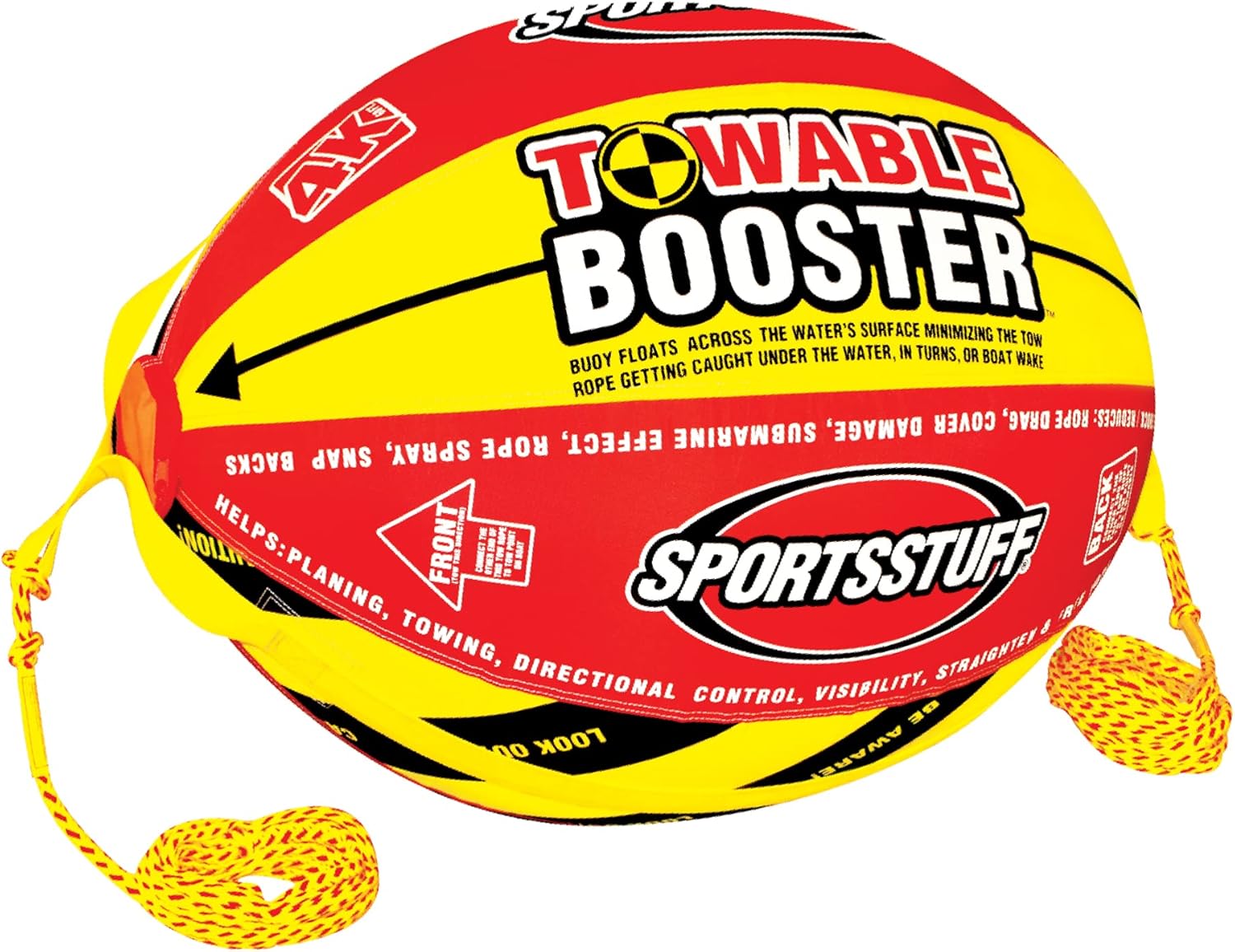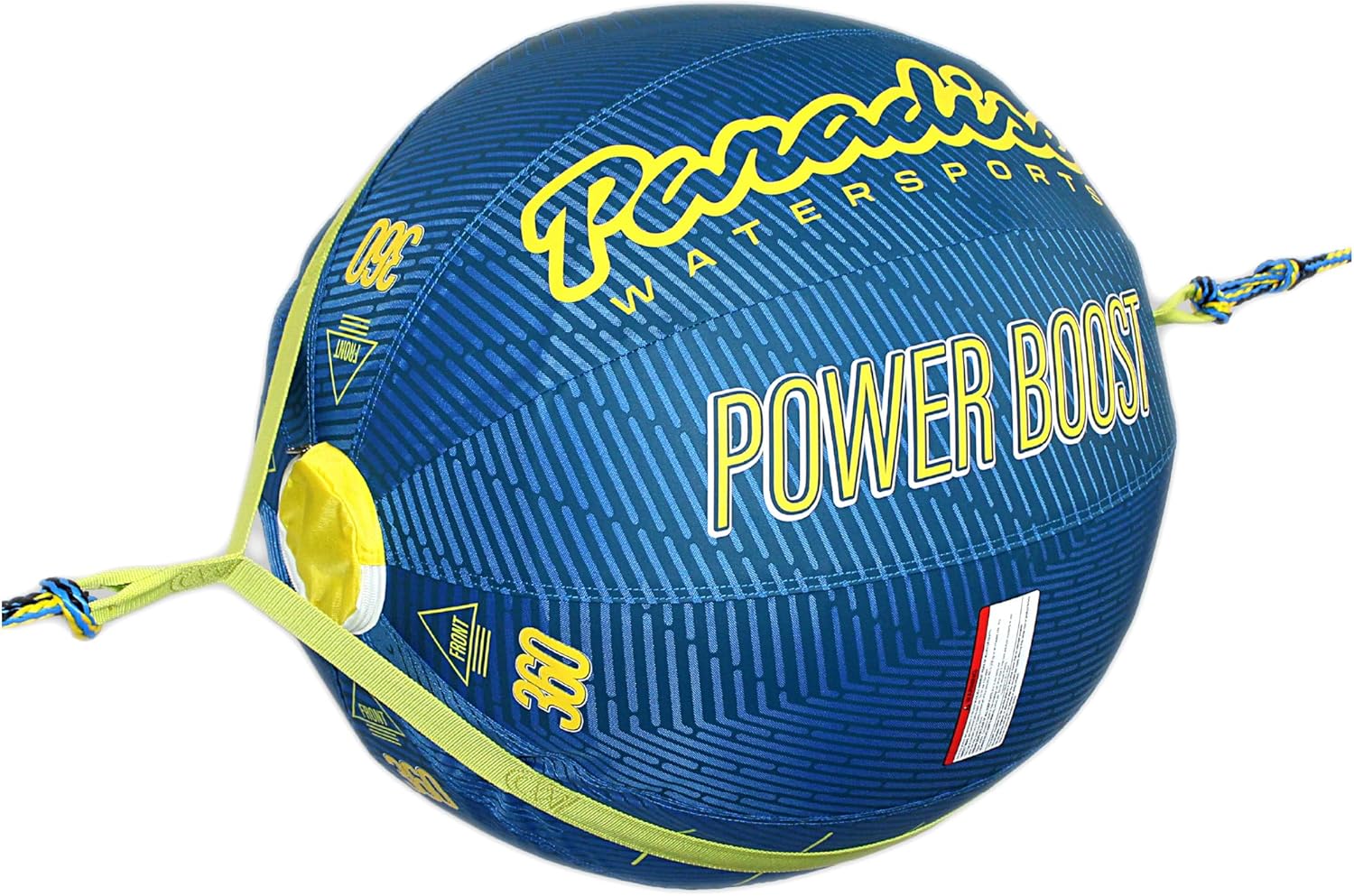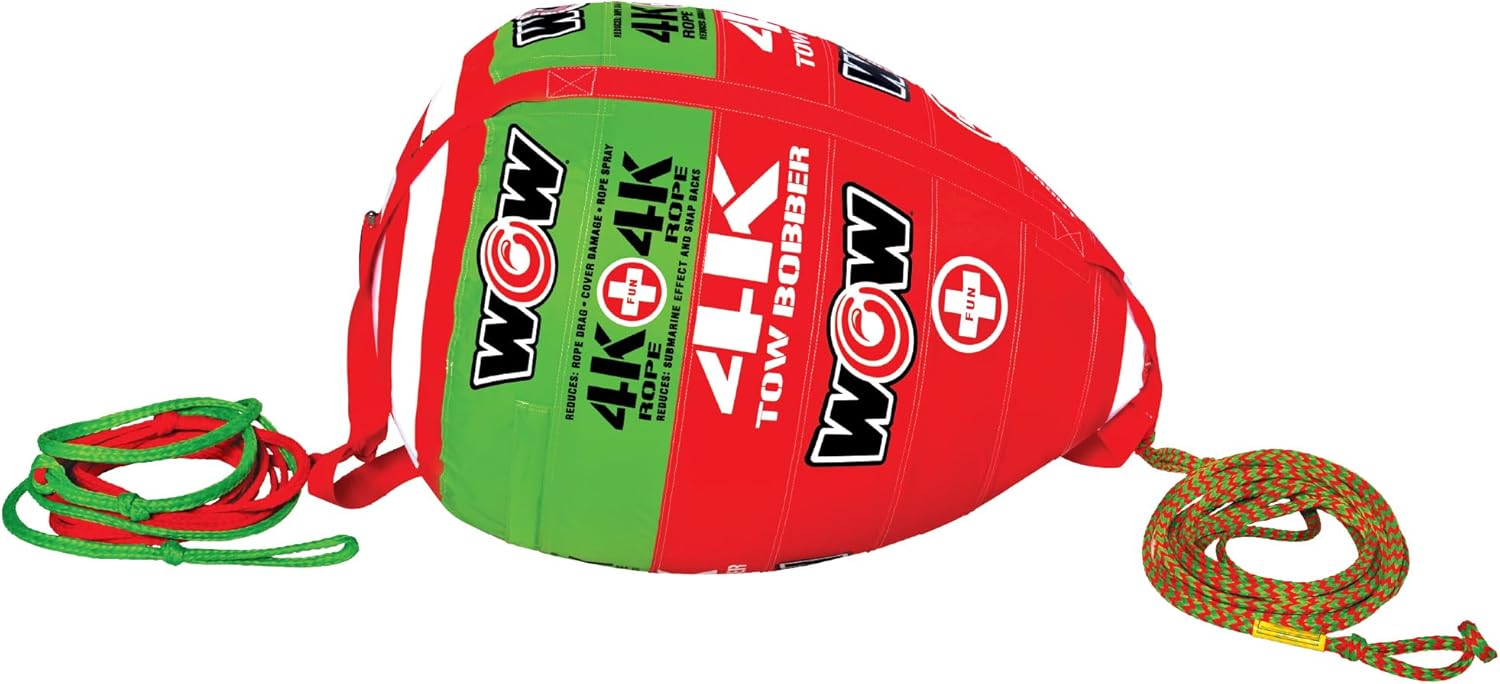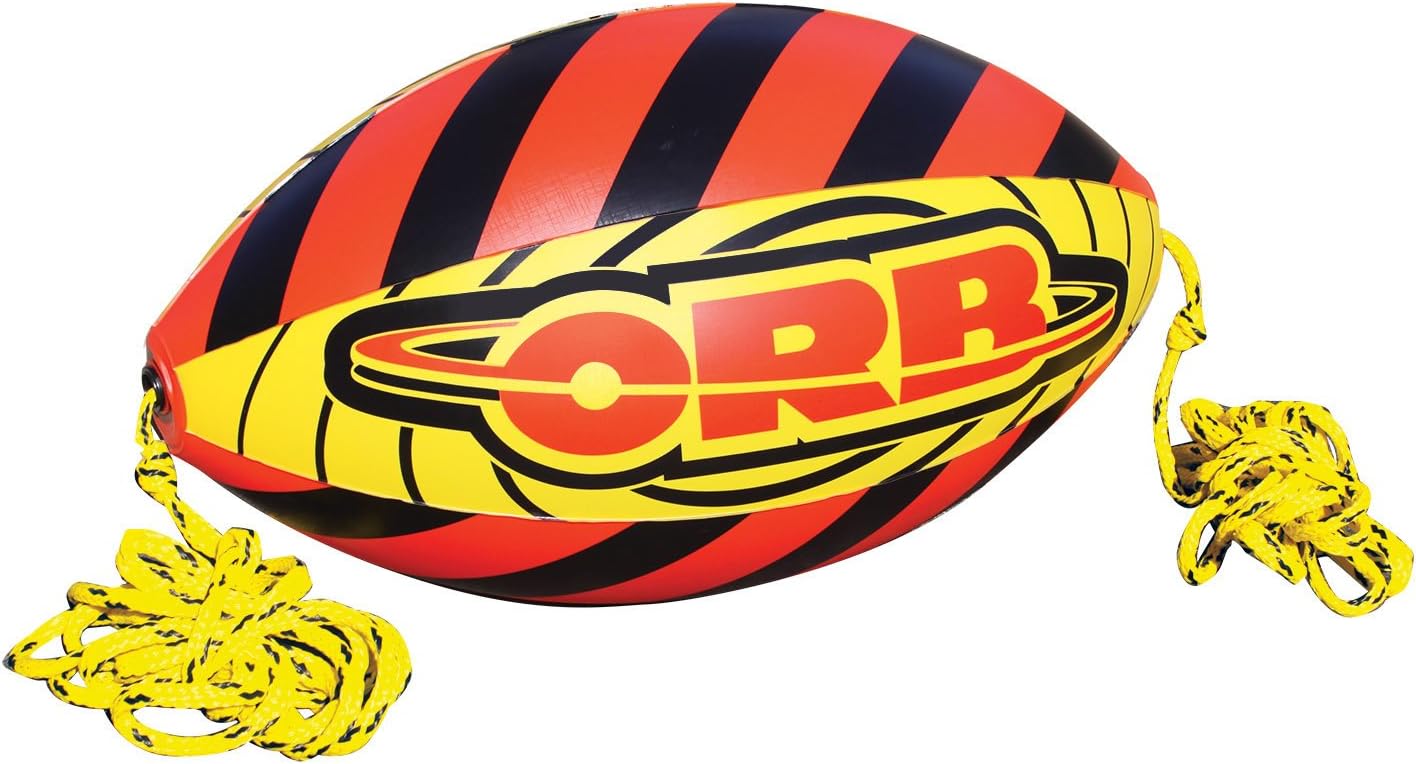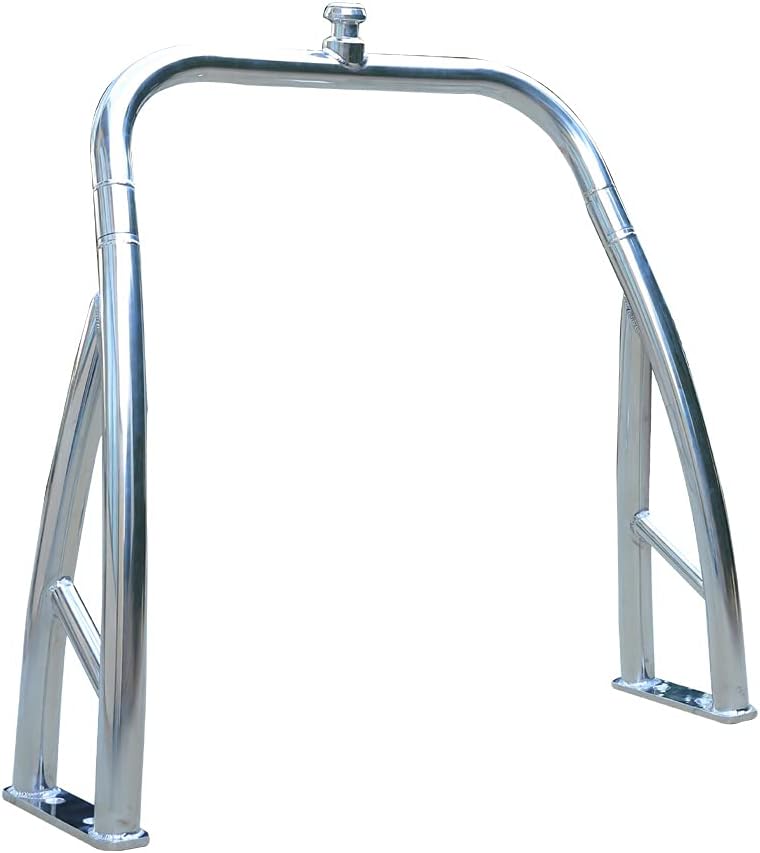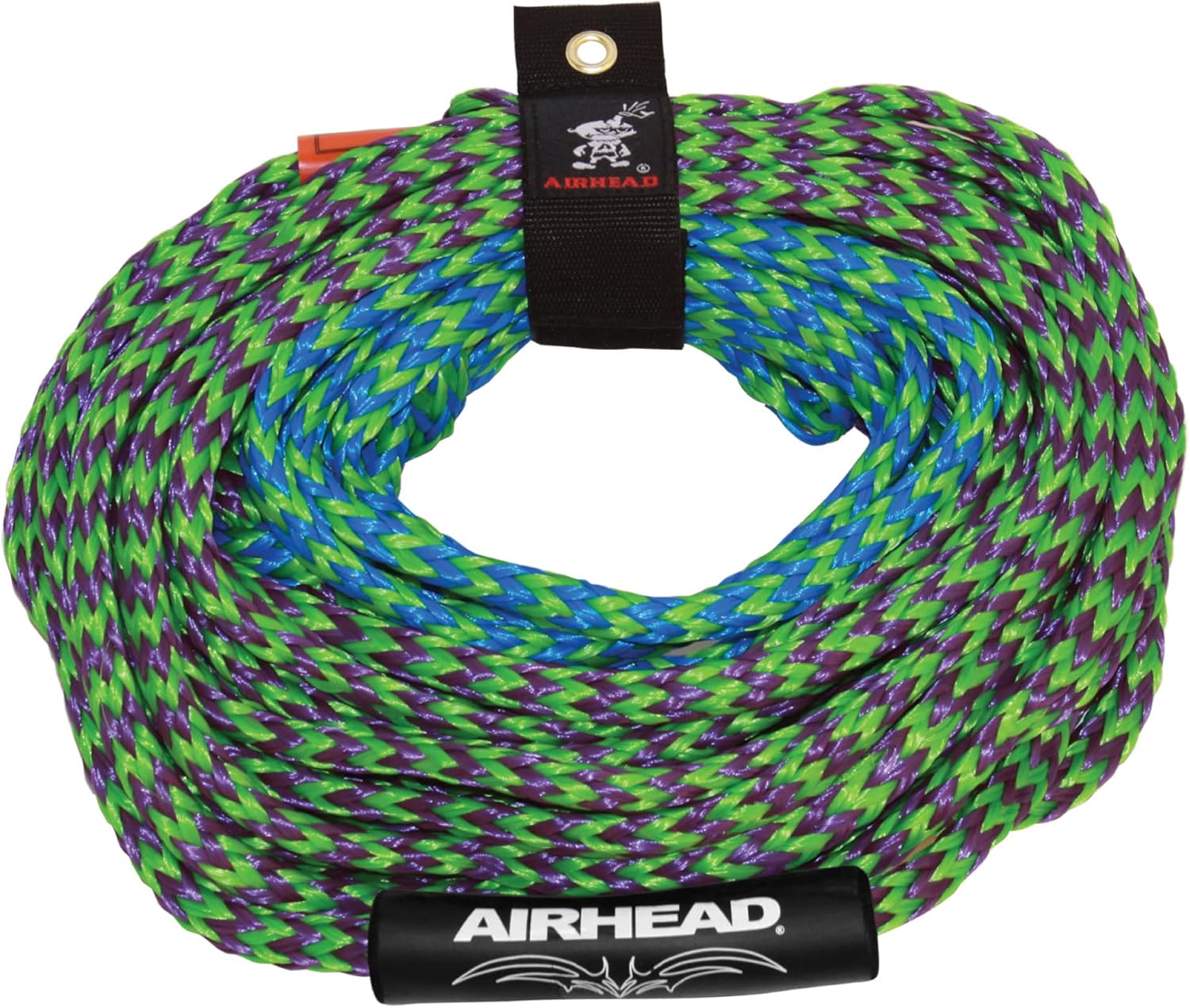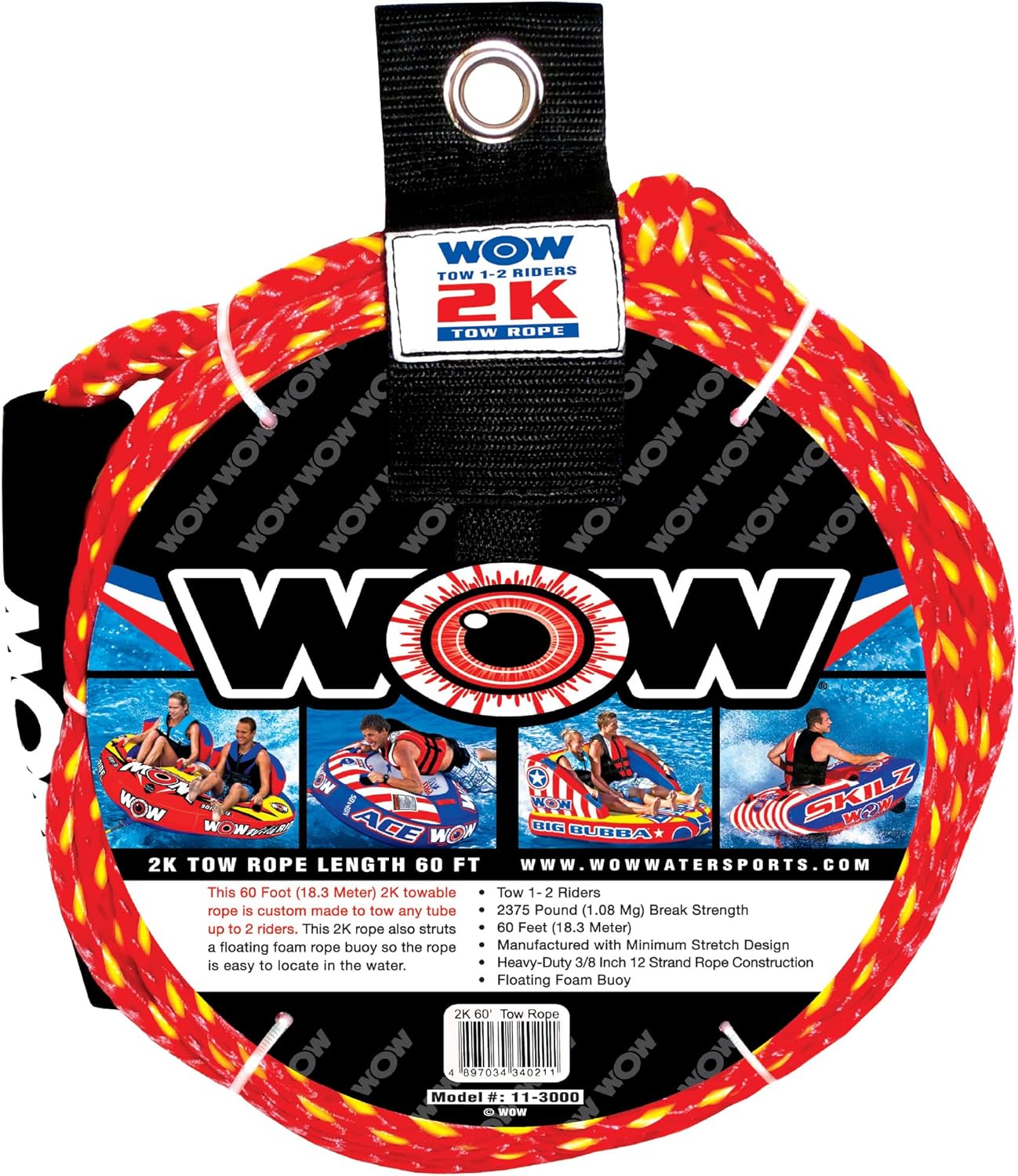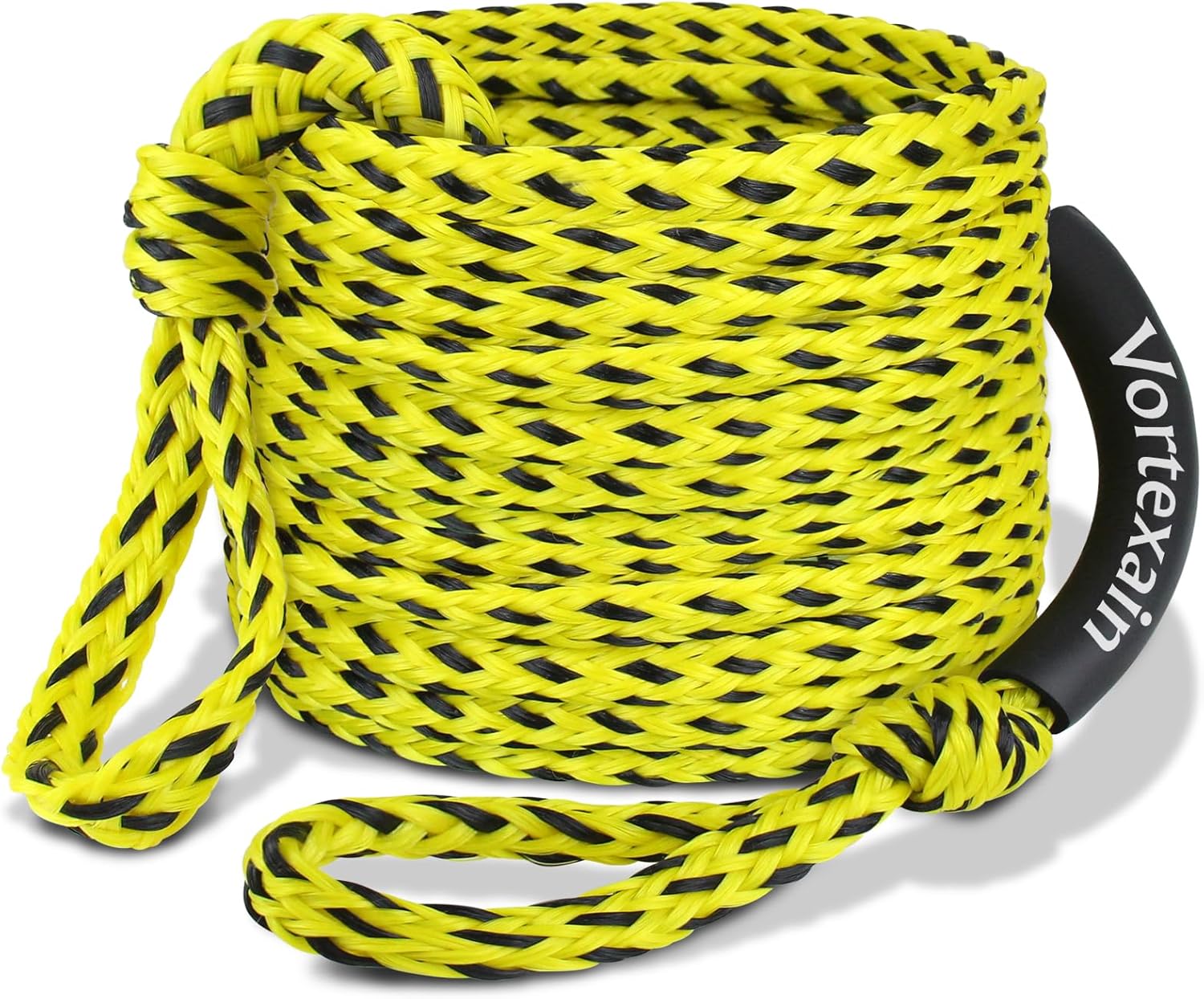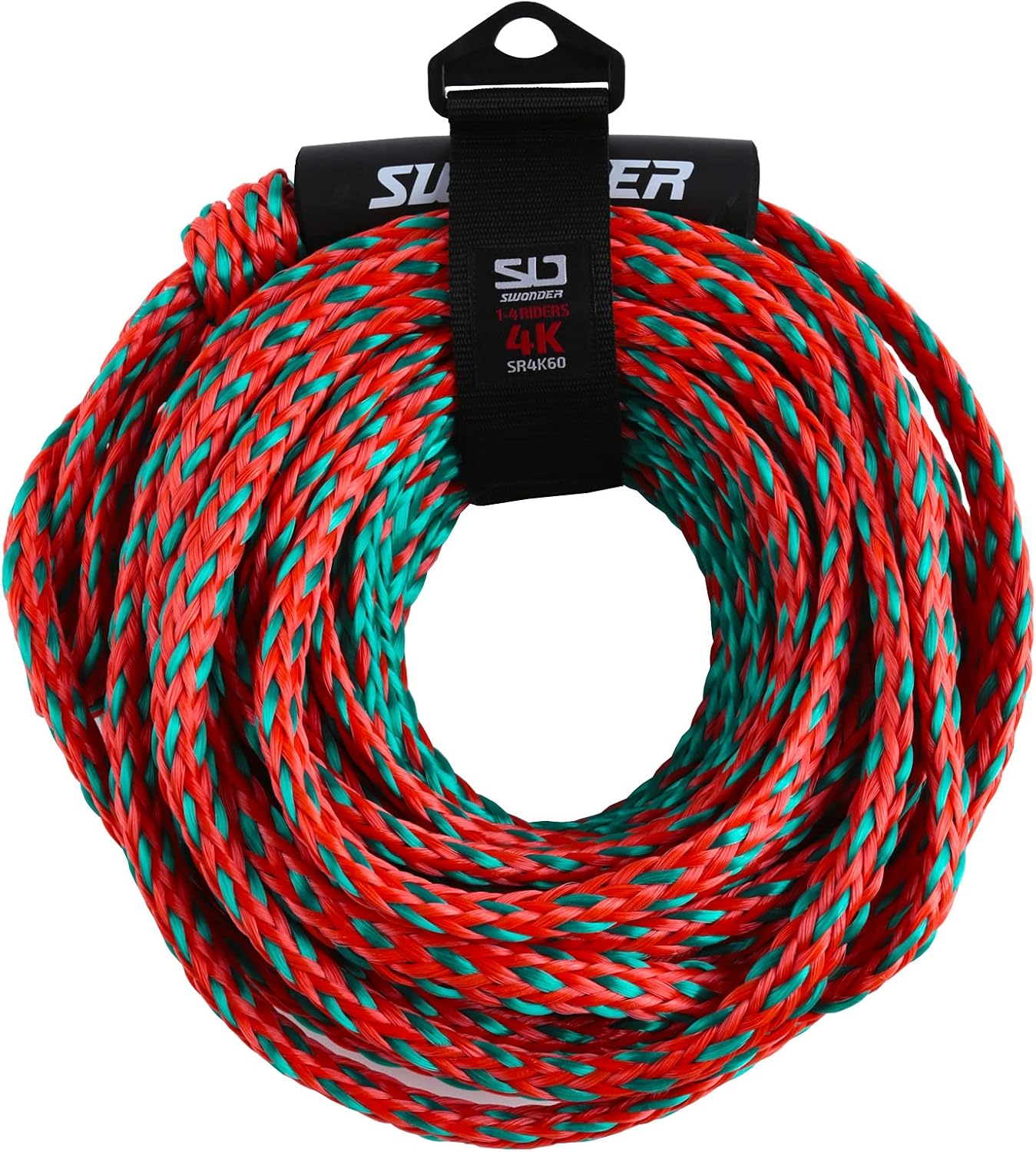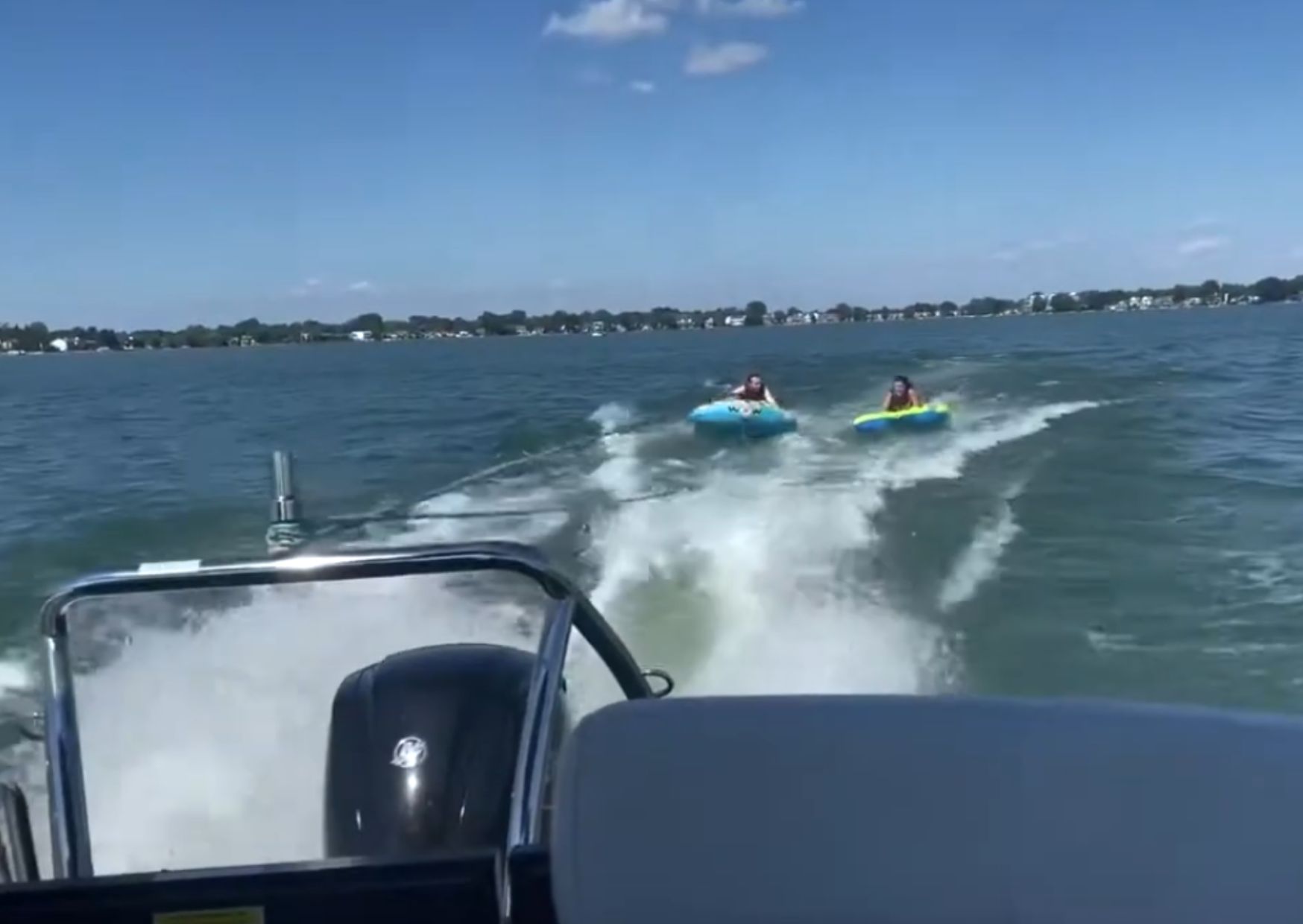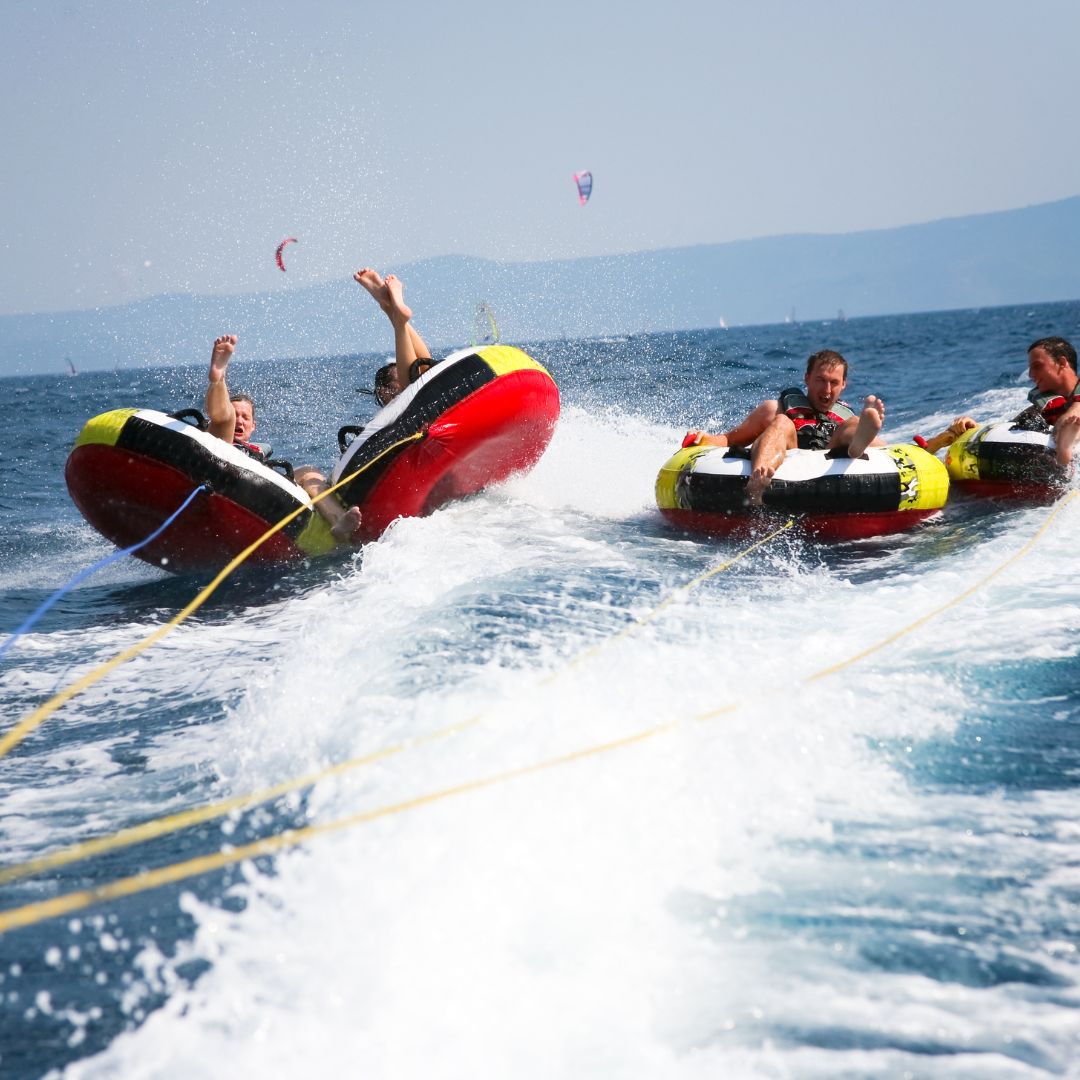Can Pontoon Boat Pull Tubes – The Complete Expert’s Guide
If you’ve ever wondered can pontoon boat pull tubes, the answer is yes, but do it wrong, and you’ll be explaining to your friends why the only thing airborne that day was the cooler lid you forgot to secure.
Nothing kills the mood faster than watching a favorite tube rope snap while Uncle Dave faceplants into the wake like a wet pancake.
Can Pontoon Boat Pull Tubes?
Yes, pontoon boats can pull tubes and they do it surprisingly well when set up correctly. The key factors for a pontoon boat to pull tubes are:
- Engine horsepower (ideally 70 HP minimum for small tubes, 90–150+ HP for multiple riders or faster rides)
- Proper tow setup (pontoon tow bar, ski pylon, or heavy-duty bridle)
- Passenger weight distribution (too many people at the bow can drag your speed down)
- Tube type (low-drag, pontoon-friendly designs work best)
- Safe driving technique (smooth acceleration, speed control, wide turns)
With the right gear and knowledge, a pontoon boat pulling a tube can be just as fun as a traditional speedboat, though it’s about fun cruising thrills, not blistering slalom runs.
Step-by-Step: How to Use a Pontoon Boat to Pull Tubes Safely
1. Check Your Boat’s Horsepower and Load
Before attaching any towable tubes, know what your pontoon can handle.
- 70 HP or less: Suitable for towing a small single-rider tube at moderate speeds.
- 90–115 HP: Great for family tubing with 1–2 riders.
- 150+ HP: Can manage larger tubes or even towing two tubes behind a boat.
Remember, every extra passenger and cooler adds weight, which reduces speed and acceleration.
2. Install Proper Tow Hardware
Never tie a tow rope to a rail or cleat, pontoons aren’t built for that kind of stress. Instead:
- Pontoon tow bar or tow bar for a pontoon boat: Strong, stable, and purpose-built.
- Ski pylon: Ideal for boats with sufficient HP and deck layout.
- Heavy-duty bridle: Works when you don’t have a tow bar but need secure attachment across.
3. Choose the Right Rope and Tube
- Tow rope: Rated for the number of riders (check weight limits).
- Booster ball for towables: Keeps the rope above water, reducing drag and preventing “submarining.”
- Tube type: Flat-bottom tubes glide better behind pontoons than deep-dish designs.
4. Rider and Spotter Setup
- Riders must wear Coast Guard-approved life jackets.
- Have a spotter and a mirror to watch riders and relay hand signals to the captain.
- Establish safety signals before starting (thumbs-up for faster, thumbs-down for slower, wave-off to stop).
5. Driving Technique
- Acceleration: Gradual, to avoid jerking the tube.
- Speed: Typically 15–20 mph for adults, 10–15 mph for kids.
- Turns: Wide arcs keep riders on the wake’s sweet spot. Tight turns can flip riders unexpectedly.
|
|
|
|
Understanding the Power Factor: Why Horsepower Matters
How much horsepower do you need?
- Lower horsepower can pull a tube, but won’t generate thrilling rides for heavier loads.
- Too much load on a low-powered pontoon means struggling to plane and wasting fuel.
- Manufacturers generally recommend at least 90 HP for regular tubing pontoon activities.
And for those wondering can you ski behind a pontoon boat, the answer is yes, but skiing requires higher speeds (25+ mph), which usually means 150 HP or more, not all pontoons are designed for that.
Weight Distribution and Performance
Tubing behind a boat is about balance. On a pontoon:
- Keep heavier passengers toward the rear to help planing.
- Avoid overloading: your capacity plate is there for a reason.
- Even small changes in load can affect the pull on the tube.
A loaded cooler and six passengers at the bow will slow you down more than you think.
Tow Hardware Breakdown
Pontoon Tow Bar
- Designed for heavy pulling, prevents rope from hitting the outboard.
- Usually bolted to the transom for maximum stability.
Tow Bar for a Pontoon Boat vs. Ski Pylon
- Tow bar = versatile, easier installation.
- Ski pylon = better for skiers and wakeboarders, requires more deck clearance.
Bridle Setup
- Runs between both pontoons, central attachment point for the tow rope.
- Cheaper alternative but must be rated for your load.
Tube Selection: Matching Tube to Pontoon Capability
For pontoons, low-profile tubes are your friend. High-drag tubes can cause sluggish handling.
- Single-rider deck tubes: Great for lower HP setups.
- Two- to three-rider chariot tubes: Need more HP and a booster ball.
- Avoid extremely large inflatables unless you have the horsepower and space to maneuver.
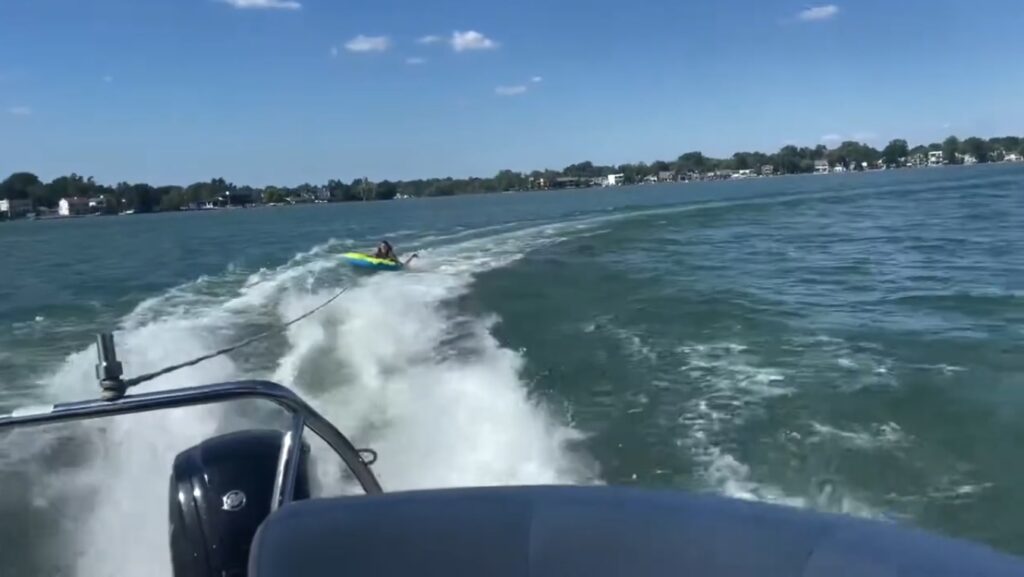
Safety Checklist Before Tubing
Every ride should start with a quick safety run-through:
- PFDs for all riders.
- Tow rope free of knots and frays.
- Spotter and mirror in position.
- Riders understand hand signals.
- Check local towing laws (some states require mirrors or spotters).
And remember: sudden throttle cuts can send riders into the back of the tube: ease down gently.
Best Pontoon Tow Bar for Tubing
A pontoon tow bar is a reinforced frame mounted to the stern (rear) of the pontoon, above the motor. It creates a high, central attachment point for the rope, which keeps it from dragging in the water and away from the outboard.
What makes a good one
- Material: Marine-grade stainless steel or heavy-duty aluminum.
- Load rating: Should exceed the maximum pull of the tube(s) you plan to use.
- Height: Taller bars keep the rope clear of spray.
- Mounting system: Bolts directly into the deck or transom reinforcement plates for stability.
Popular examples
- TurboSwing (attaches to the outboard’s mounting bracket, doubles as an engine guard)
- Aerial or Monster Tower pontoon tow bars (high-grade, easy rope clearance)
If you’re tubing often, a permanent tow bar is the safest and most durable solution.
Where to Attach Tow Rope to a Pontoon Boat
Never tie directly to side rails or cleats: pontoons aren’t designed for that pulling force. You have three safe attachment methods:
- Pontoon Tow Bar: The rope clips directly to the eyelet or hook at the center of the bar.
- Ski Pylon: Rope attaches to the eyelet at the top of the pylon.
- Pontoon Tow Harness: If you don’t have a tow bar or pylon, a bridle runs between the two rear lifting eyes (one on each pontoon log) and provides a centered hook for the rope.
Key tip: Keep the attachment point high and centered for smooth pulls and less spray.
Best Pontoon Boat for Water Skiing
Water skiing behind a pontoon is possible, but you’ll need:
- 150 HP or more for strong acceleration and 25+ mph speeds.
- Tri-toon hull (three pontoons instead of two) for better planing and stability.
- Lifting strakes to reduce drag and improve speed.
Some performance pontoons from brands like Bennington, Manitou, and Harris are designed for watersports and come with built-in ski pylons and reinforced transoms.
Can You Wakeboard Behind a Pontoon Boat?
Yes, you can wakeboard behind a pontoon, but it’s not the same as behind a wake boat:
- You’ll get a smaller, flatter wake (pontoons don’t shape large wakes).
- You need enough horsepower (ideally 150 HP+) to pull the rider up.
- A ski pylon or tow bar is essential to keep the rope elevated.
Wakeboarding behind a pontoon is best for beginners or casual riders, not those seeking big aerial tricks.
Tow Rope for Pontoon Boat
|
|
|
|
A tow rope must be matched to your activity:
- For single or double tubes: 2,375–4,100 lb tensile strength, 50–60 feet long.
- For skiing or wakeboarding: 1,500 lb tensile strength, 65–75 feet long.
- With pontoons: Use a floating, brightly colored rope to avoid prop entanglement.
- A booster ball can be added mid-rope to reduce drag and spray.
Pontoon Tow Harness
A pontoon tow harness is a Y-shaped line with clips on both ends and a pulley or hook in the middle.
- Purpose: Centers the pull between the two pontoons, keeps rope clear of the motor.
- When to use: If your pontoon doesn’t have a tow bar or pylon, or when pulling from the stern lifting eyes.
- Material: Look for marine-grade, UV-resistant rope with stainless steel clips.
It’s a cost-effective, easy-to-install solution for casual tubing, though not as robust as a permanent tow bar.
Troubleshooting Common Pontoon Tubing Problems
- Tube won’t get on plane: Check HP, reduce load, use a booster ball.
- Rope splashing and dragging: Adjust tow point height, consider a pylon or tow bar.
- Excessive spray hitting riders: Lower speed or change tube type.
- Rope snapping: Upgrade to a rope with higher tensile strength.
Can You Pull Two Tubes with a Pontoon?
Yes, but you need the horsepower, space, and control to do it safely.
- Use a Y-bridle setup or dual tow points.
- Keep speeds conservative: two tubes add a lot of drag.
- Ensure riders know the risk of crossing paths.
Damage and Warranty Concerns
Repeated heavy towing from weak attachment points can bend rails or stress your transom.
- Always follow manufacturer guidelines.
- Reinforce tow points if towing regularly.
- Check if tubing voids parts of your boat’s warranty.
Legal Requirements for Towing a Tube Behind a Boat
Regulations vary, but most require:
- An observer over 12 years old.
- PFDs for all riders.
- Daylight towing only.
- No towing within a set distance from shore or other boats.
Check your state or country’s boating laws before heading out.
Can Pontoon Boat Pull Tubes vs. Ski Boats
While ski boats can generate higher speeds and sharper turns, pontoons offer more stability and comfort for casual tubing. If your goal is safe family fun rather than competitive slalom skiing, a properly equipped pontoon will deliver.
The Bottom Line on Can Pontoon Boat Pull Tubes
So, can pontoon boat pull tubes? A pontoon boat pulling a tube can give you hours of watersports fun, provided you match your setup to your boat’s capacity and follow good safety practices. Whether you’re tubing pontoon style for relaxed rides or cranking up for more adventurous runs, the right hardware, horsepower, and technique make all the difference.
If you want thrilling but safe tubing, invest in the right tow equipment, keep your boat well-maintained, and always put safety first. That way, the only thing you’ll lose during the ride is your hat, not your passengers.
